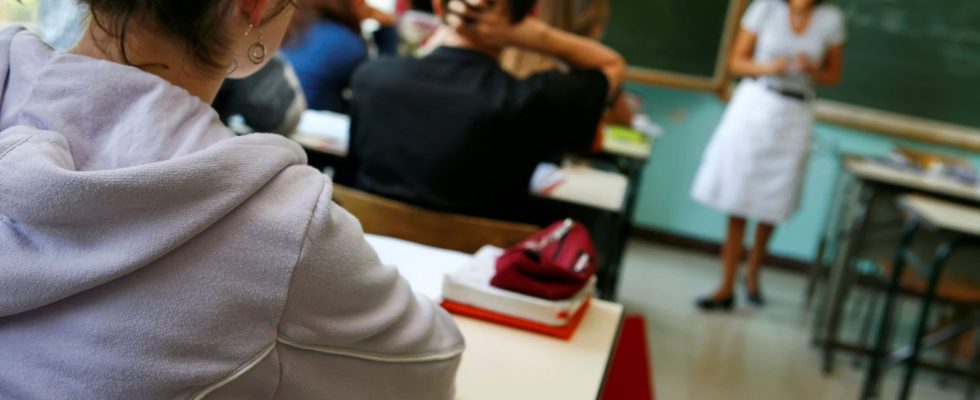While in Sweden, the number of complaints from teachers for threats and violence has doubled in 10 years, in South Korea, teachers complain of being harassed by both parents and students. Our two correspondents describe the situation on site.
Published
Reading time: 5 min

In Sweden, the figures revealed by a survey by the teachers’ union are alarming. They report that since 2021, one in three high school teachers are threatened with violence each year. This figure would be underestimated, as teachers have become accustomed to threats and do not always report incidents. From primary to secondary school, 60% of teachers were victims of verbal violence, 15% of physical violence, 11% of cyberviolence and 7% of sexual behavior, according to this report.
Behind these figures, up 20% compared to 2017, stories of these recurring incidents pepper the Swedish press. We can read titles such as: “A student hits his teacher and breaks his nose”; “A teacher gets spat on in the face”; “A CM2 throws a flowerpot at the teacher’s head”. Working conditions are so poor that 16% of teachers say they are considering leaving the profession because of threats and violence at school.
Particularly disturbing, it is younger and younger students, from primary school onwards, who are at the origin of these aggressive problems.
Swedish teacher fired after defending student
One of these incidents turned into a real story and received national media coverage. A Swedish teacher who intervened with a student violently attacking another was fired for his actions. It happened in May 2023, in a public middle school in a small town in southern Sweden. During recess, a 16-year-old student torments one of his classmates, younger than him and slightly disabled. A language teacher intervenes, the young harasser sneers, then threatens to “thrash” him, before pushing the teacher in the chest. In response to the student’s shoving and threats, the teacher pinned him against a cabinet by placing his arm across his upper torso.
The Court, which judged the case, found that the teacher had acted in self-defense and had acted urgently. But the professor in question was fired for having reacted disproportionately, according to the college management. This case, judged at the end of November 2023, however saw the student sentenced to 10,000 crowns, or 890 euros, in damages, for “threat against a civil servant”. This offense which only concerned attacks on the police, hospital or administrative staff, now protects, since August 2023, the teaching profession. After the establishment’s complaint against the teacher (dismissed), followed by his dismissal, the teachers’ union therefore took the college to the industrial tribunal for unjustified dismissal.
This story has restarted a whole discussion: what can be done to prevent and punish this increasingly hostile behavior? How to restore a form of teacher authority? In Sweden, students are familiar with teachers, but some believe that the emphasis on students’ autonomy and well-being has led to a lack of frameworks and benchmarks for children.
According to the unions, the root of the problem comes from budget cuts and in particular from the fact that school assistant positions have been eliminated. These made it possible to support teachers and better support problematic students.
In Korea, demonstrations after the suicide of a young teacher
In South Korea, teachers’ unhappiness has been making headlines for several months. Last summer two particularly shocking events marked the country. First the violent attack on a teacher by one of her students who hit her several times in the face, then the suicide of a young 23-year-old teacher, victim, according to her family and the unions, of harassment from parents of students.
After this latest tragedy, teachers took to the streets to denounce their inability to work in acceptable conditions. A protester testifies: “When we explain to children that we have to apply ourselves to writing, to stay calm, to sit in seats, all of these things that are considered normal educational practices, we can be accused of ’emotionally abusing children’.” This threat weighs on a daily basis, she continues : “We can be denounced by parents and the school will not protect us because we will become abusive teachers…” This testimony is far from isolated. These teachers met during the demonstrations were so afraid of being punished by their establishment, or of facing the wrath of parents, that they refused to give their names.
South Korea is known for its extremely demanding school system, with students working long hours, between 12 and 16 hours a day, to achieve good results. How could the balance of power have been reversed to this extent?
Historically, the figure of the teacher was very respected and the rules towards students very strict. The latter have even suffered corporal punishment from their teachers for a long time. But over the past twenty years, several reforms have been put in place to protect children. These went too far, according to the teachers. They are now paralyzed by the possibility of being the subject of a complaint from parents for “emotional duress” and to be immediately fired.
To cope with school competition and absolutely central educational issues, parents invest on average 300 euros for additional lessons. These financial or personal sacrifices created an environment of stress for parents and students and this appears to have resulted in teacher mistreatment. Faced with the discontent of teachers, the government finally reacted and took a series of measures to protect them. But no comprehensive reform of the school system aimed at alleviating the general pressure seems to be in the pipeline.
